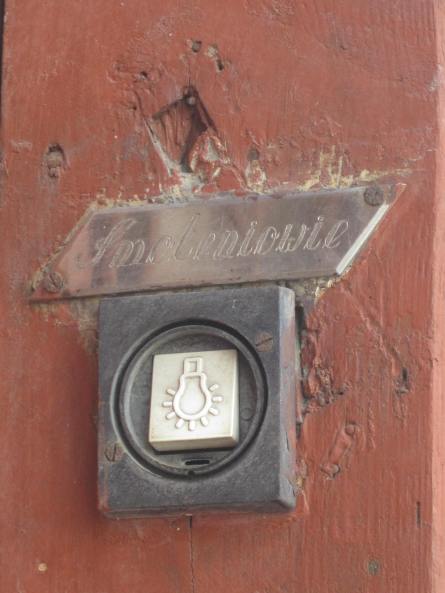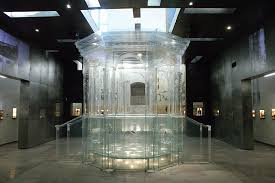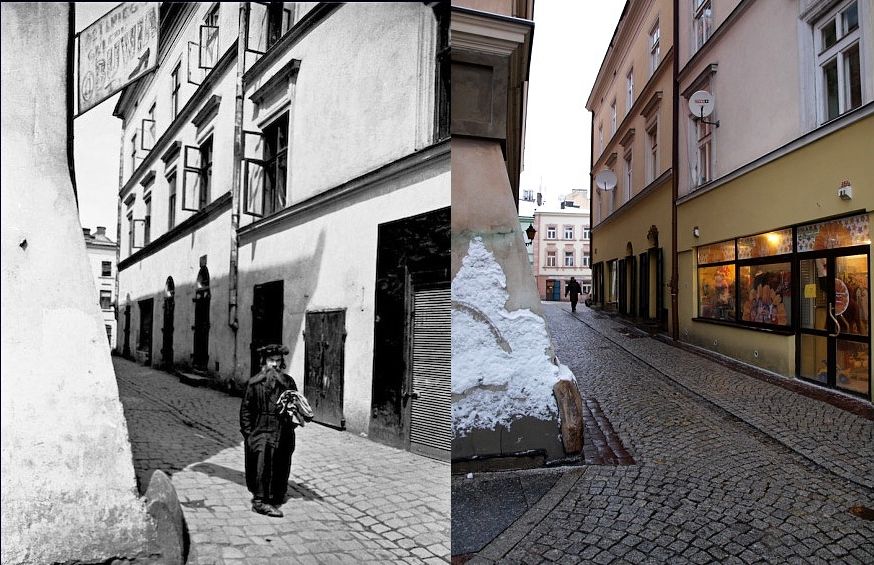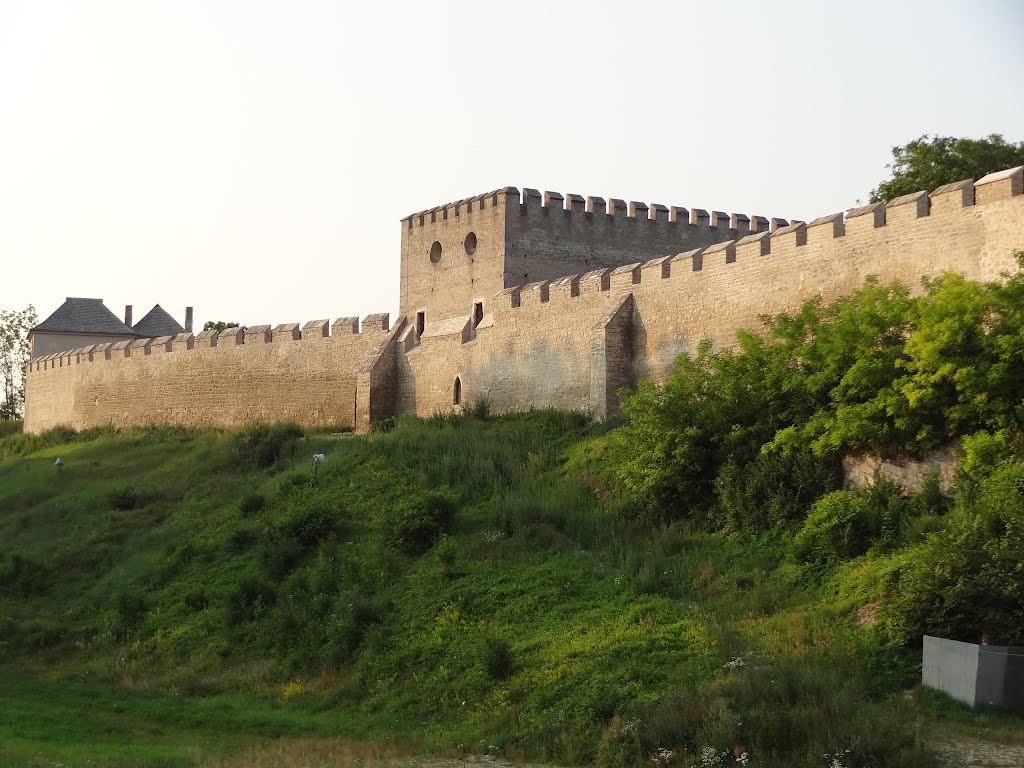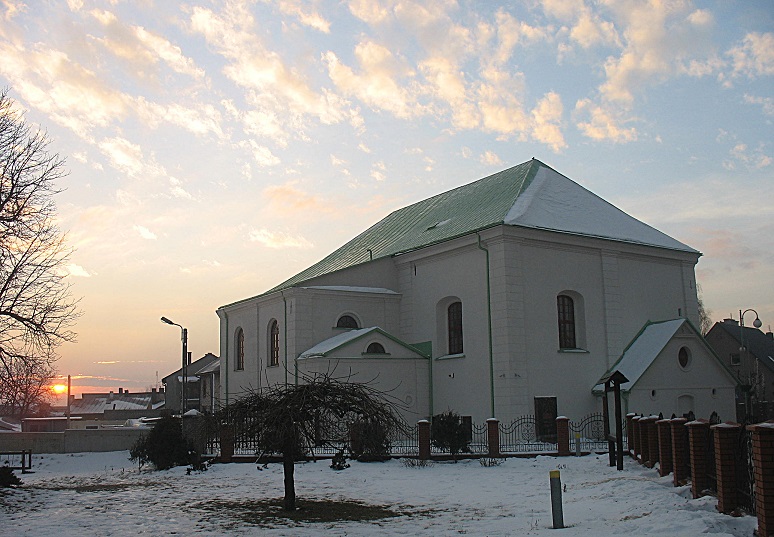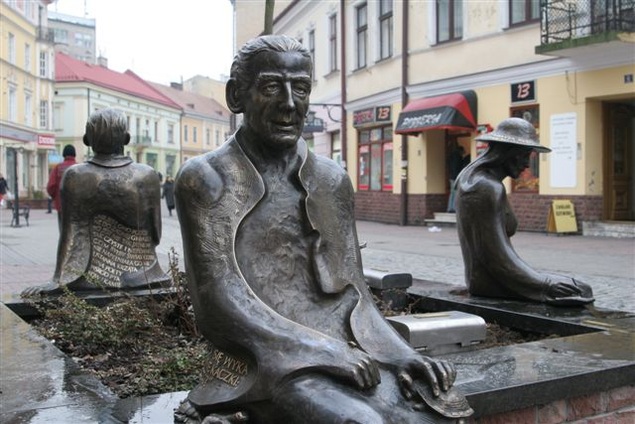Mezuzah- On a wall in Tarnów
Traces of the Mezuzah
According to the Auschwitz-Birkenau Memorial Page, more than 44 million people from all over the world have visited Auschwitz since 1945 with the largest number recorded in 2014 which registered more than 1.5 million.
It is heartening to know these numbers point to an increase during times of pronounced cultural racism and mounting hate crimes, but is it alone enough to stem this rising tide of social apartheid? In terms of the ethos of an action, such as making a pilgrimage to a sacred site, is there more along these lines that would encourage a presence of Jewish renewal in Poland in addition to the outpouring of visitations to the Concentration Camps?
I say, yes. Those who met their deaths at Auschwitz, Treblinka, Belzec, Janowska, Sobibór to name but a few of these unthinkable Death Camps where millions were mercilessly exterminated, certainly we owe the dead our time and effort to visit such places, but this is not where Jewish life thrived. For over a thousand years, Jewish life evolved in the marketplace, in the synagogue, at the bakery, in Shul, preparing for Shabbat; the spirit of Jewish life was celebrated in the everyday vitality of village life, not in the camps.
Do the footsteps of these everyday lives ask from us also our attention?
In Chmielnik, for example, one can pay their respects to the Synagogue with its unique glass bimah, but also one can simply walk through the town square, stop for a coffee and a cake, and visit a local shop. From an article written by the Times of Israel on July 2, 2013, Helen Garfinkel Greenspun returns often to Poland to her hometown of Chmielnik.
“Look how beautiful. The land is beautiful,” she exclaims, pointing to an undulating countryside dotted with farms, quaint villages and green fields. “And Poland has the best food,” she declares, referring to her favourite dishes, such as pierogis, mushroom soup, potato pancakes, stuffed cabbage, blueberry pastry, farmer’s cheese with bread.” She reminisces about her family life and childhood that the war destroyed. “Really, it’s the memories of my parents that bring me back.” The article goes on to quote, “The attitude of people,” Greenspun said, “more than the preservation of Jewish landmarks, is what gives her hope.”
There are few Jews left in Poland and certainly fewer in the villages, if any at all. However, if you walk down Żydowska and Wekslarska Streets in Tarnow, with its narrow passages and small courtyards, you will be in the midst of what was once a thriving Jewish community. Nearby is the bimah, the only thing left of the synagogue. Its vulnerability is arresting as it stands outside without the loving embrace of its former synagogue walls. The last prayer house and mikvah remain as a reminder of what life was like before the war.
Szydłów, offers a Gothic synagogue/museum with an historic medieval wall to match. Some have even likened this sleepy village to Carcassonne with its grand gate still standing majestic as it welcomes you into its centre.
In The Story of Jewish Chmielnik by Marek Maciągowski and Piotr Krawczyk, portray a strong community. “The Jews from Chmielnik entered the 19th century as a well-organised and well-functioning community….The community, thanks to its rabbis, was quite well-known in the Jewish world. It had its own representative synagogue, two schools and old small cemetery situated by the synagogue’s walls, which needed to be enlarged….local craftsmanship and trade were flourishing and their development stimulated broad sales markets.”
The villages in Poland were home to the heart and soul of the Ashkenazi world.
“You cannot have genocide and then have people live as if everything is normal,” said Konstanty Gebert, founder of a Polish-Jewish monthly, Midrasz. “It’s like when you lose a limb. Poland is suffering from Jewish phantom pain.”
The landscape, the forests, the architecture and memories of these villages beckon us to return to them with a prayer on our lips in reverence of the everyday lives that drank coffee, quarrelled with their spouse, questioned their existence, studied science and read the comics.
I believe we can do more than pay homage to the death camps by returning to the villages and establishing a presence in honour of the ancestors that once lived here.
It is extraordinary to me that since the history of the Holocaust has been studied for over 60 years that genocide would still prevail. It is unbelievable that the heart of man is capable of such evil. I don’t know how to combat the hatred on a world scale which one witnesses today. I only know that when we engage with the authentic, something of value emerges. The lives of our Jewish families were tragically and horrifically taken from them and from us. But they were real and they had dreams and hopes and fears not unlike our own.
To visit them in their natural setting is also a way of communing and remembering the lives of those whose potential was brought to a violent end. Even more reason to make the journey is in the shocking reality that most Polish youth have never met a Jew. How will we, as a human family, transcend prejudice and ignorance if we don’t learn to honour and respect each other, especially our differences?
In Tarnow, there is a bronze sculpture of the famous Polish Jewish Poet, Julian Tuwim. You can sit next to him with coffee in hand and read his famous poem, Kwiaty Polskie
Polish Flowers, part of which I’ve printed here.
Przywróć nam chleb z polskiego pola
Przywróć nam trumny z polskiej sosny
Lecz nade wszystko – słowom naszym
Zmienionym chytrze przez krętaczy
Jedność przywróć i prawdziwość
Niech PRAWO zawsze PRAWO znaczy
A SPRAWIEDLIWOŚĆ – SPRAWIEDLIWOŚĆ.
Restore our bread with the Polish field
Restore us coffin of Polish pine
But above all – our words
Slyly amended by crooks
Restore unity and truthfulness
Let RIGHT RIGHT always mean
A JUSTICE – JUSTICE

